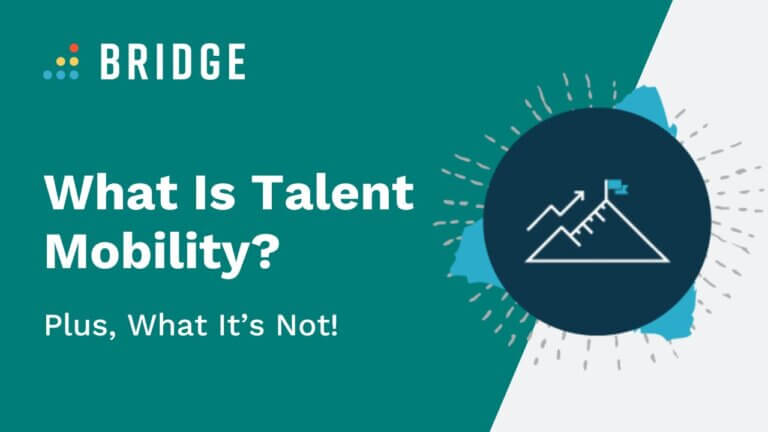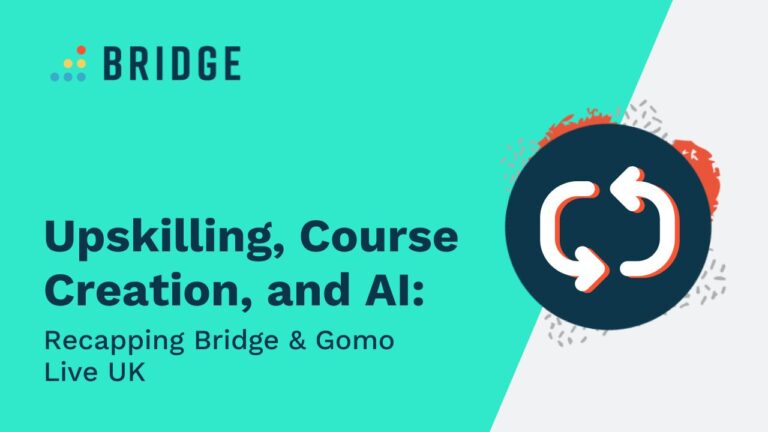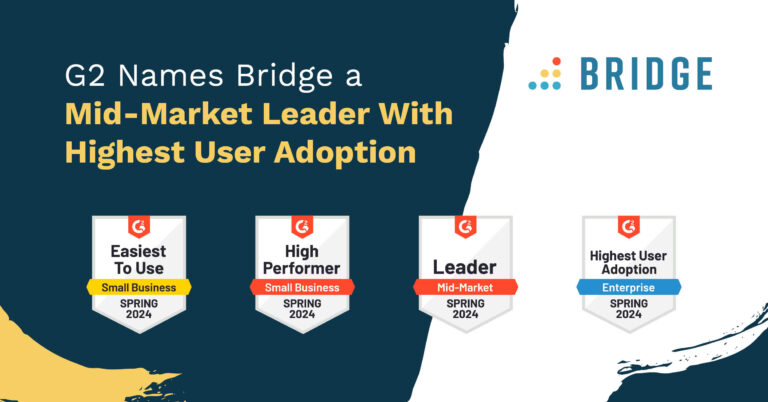Whether you’re experiencing the hiring freezes that accompany economic turbulence or the time-intensive process of recruiting new people, talent mobility has never looked more appealing. By cultivating your internal talent, you’ll be rewarded with an array of retention-, engagement-, and productivity-related benefits—all without looking beyond your organization.
In order to realize these benefits, it’s worth taking a moment to reflect on what talent mobility is. To make the most of your internal mobility strategies, you’ll need to understand how career pathing and skill development platforms infuse your employees with the knowledge, enthusiasm, and vision to step into your internal vacancies with confidence.
What Does ‘Talent Mobility’ Mean?
Talent mobility refers to your organization’s ability to quickly understand and leverage the skills, experiences, and career interests of your employees. The overarching goal of this process is to move employees into new roles internally, where existing skills can be sharpened and new skills can be developed.
To some, talent mobility programs are simply about moving employees to new internal roles a little more quickly. In fact, dozens of vendors cater to that assumption by repurposing their external candidate recruitment matching algorithms and applying them to internal employees.
However, this approach is far from the full story.
Internal job matching is just one among several aspects of talent mobility—and without the right supporting resources and a clear vision, it can increase turnover among employees frustrated by a lack of available openings.
To create a more well-rounded talent mobility ecosystem, you need to look beyond basic job boards populated with indiscriminate recommendations. Meaningful mobility is an involved and personalized process that helps employees plan and manage their individual journeys with your company.
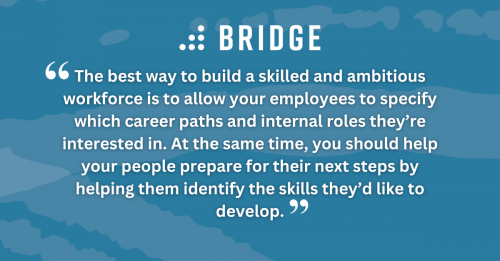
How to Develop a Strategic Approach to Talent Mobility
Sudden resignations and unanticipated needs can make internal vacancies hard to plan for—but that doesn’t mean your talent mobility process shouldn’t involve strategy.
After all, the people that make up your organization will have plenty of career-related plans and goals, and using talent mobility to support those aspirations will result in a highly prepared workforce filled with eager and competent candidates ready to step into your vacancies as they open.
The best way to build a skilled and ambitious workforce is to allow your employees to specify which career paths and internal roles they’re interested in. At the same time, you should help your people prepare for their next steps by helping them identify the skills they’d like to develop.
A good talent mobility platform will use that data to intelligently suggest career paths that line up with the skills employees want to use and offer training specific to the aspirations they’re pursuing.
To add a further layer of strategy to this process, the right mobility platform will be able to create an internal talent marketplace that allows employees to participate in experience-boosting projects, relevant mentorship opportunities, and skills-based learning assignments.
TAKE A CLOSER LOOK | ‘How Talent Mobility Empowers Employee Development’
3 Benefits of Leveraging a Talent Mobility Strategy
According to the World Economic Forum, technological change and similar shifts mean that one billion workers will require reskilling by 2030, and that lifelong learning is a crucial means of future-proofing an array of current and future jobs.
As such, it’s no wonder workers are interested in the upskilling, reskilling, and agile career development opportunities associated with talent mobility.
At the same time, as one McKinsey report suggests, there’s a growing recognition of the value of HR automation as a means of eliminating repetitive administrative tasks. Embracing a certain amount of automation through talent mobility platforms gives talent professionals more time to focus on initiatives that meaningfully improve their work environments.
Clearly, for employees and organizations alike, a good talent mobility strategy comes with a range of benefits. While there are plenty to choose from, we’ve singled out our top three for your consideration.
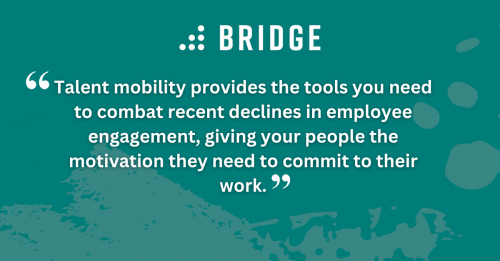
1) Reduced Turnover Costs
When an experienced employee leaves, organizations are faced with a loss of productivity, institutional knowledge, and client relationships—not to mention the costs incurred by recruiting and training a replacement.
These costs can vary based on industry, organization size, and position.
As a rule of thumb, however, Gartner research suggests that the average cost incurred by a departing worker comes to $19,000—a figure which doesn’t include the less quantifiable (but no less significant) losses in productivity caused by worker dissatisfaction leading up to the point of resignation.
While employee turnover can never be completely eliminated, LinkedIn has found that the likelihood of retention is 19% higher among employees who make an internal move by the two-year mark when compared to those who stay in the same position.
The message here is clear: talent mobility is a key method of reducing turnover and the eye-watering costs that come with it.
PLAN TO RETAIN YOUR TALENT | ‘4 Steps to Create an Employee Development Plan’
2) Higher Employee Engagement
According to Gallup, only 32% of employees were engaged with their work in 2022. Among the various engagement elements Gallup measures, declines were found in:
- Feeling cared about at work
- Opportunities to learn and grow
- Opportunities to do what employees do best
And, for under-35s and women, Gallup also noted a decline in: Having someone who encourages their development
Any internal mobility strategy worth its salt will include ways to address each of these declines, from mentors offering developmental encouragement to learning recommendations that provide a means to grow. Plus, by helping your people find internal roles that suit their strengths, you’ll ensure they do what they do best—all while demonstrating how much you care.
If your people aren’t sure how they want to learn or grow, you can help them figure out the right direction while offering further encouragement through exercises like Bridge Career Drivers. This card-based activity helps employees whittle down their interests, ambitions, and priorities, leaving you with engaged and motivated employees who are better positioned to use your talent mobility platform to achieve their new-found goals.
In short: talent mobility provides the tools you need to combat recent declines in employee engagement, giving your people the motivation they need to commit to their work.
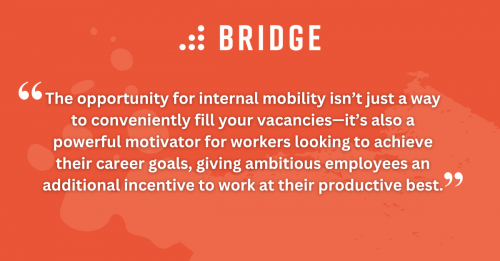
3) Improved Employee Productivity
The opportunity for internal mobility isn’t just a way to conveniently fill your vacancies—it’s also a powerful motivator for workers looking to achieve their career goals, giving ambitious employees an additional incentive to work at their productive best.
According to Swiss academic researchers, ambitious workers are more committed to their organizations and work, and they tend to be higher performers. This isn’t hugely surprising—as the authors point out, ambitious people need to work hard and perform well to achieve their goals.
However, these positive aspects of employee ambition will only be realized in the right working environment. The researchers found that ambitious workers are more motivated to improve their productivity and stick around for the long haul if their organization “is perceived to provide many career opportunities.”
A good talent mobility strategy offers exactly that. Even when internal vacancies are low, your employees will still have the development resources, mentors, and career path recommendations to make them feel like they’re progressing toward bigger or more rewarding positions within your organization—allowing you to reap the rewards of organization-wide productivity improvements.
Ready to Start Opening Doors for Your Employees?
Help employees develop the skills they need for career development and growth. Bridge helps organizations close the skills gap by uncovering which skills are lacking, delivering impactful learning to improve those skills, and helping employees articulate and achieve their career visions. Reach out today to find out how Bridge can help you.
